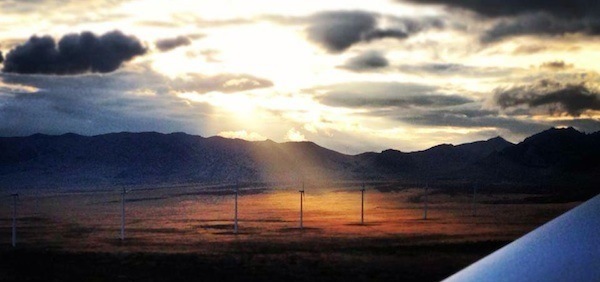Wind power has become the least expensive and fastest growing source of renewable energy in the world.
In the Pacific Islands States, however, the scale at which wind energy technology has been adopted is comparatively small.
In fact amounting to only 0.004% of the global cumulative installed capacity according to recent statistics released by the Global Wind Energy Council.
Small wind turbines ranging from 15 kilowatts to 100 kilowatts are ideal for providing energy to remote rural areas and thereby, reducing carbon footprints and dependency on imported fossil fuels.
The Pacific Island States with its small scattered islands accompanied by high humidity, wind-driven salty air, and proneness to cyclones presents unique challenges which need to be addressed when implementing wind energy initiatives.
Although a number of Pacific Island countries already have wind resource monitoring systems in place, the transition from the data collection phase to implementation of wind energy systems is severely limited.
To help bridge this gap, senior energy officials and power utility personnel from Cook Islands, the Federated States of Micronesia, Fiji, Kiribati, Republic of Marshall Islands, Palau, Samoa, Solomon Islands, Tonga, Tuvalu, and Vanuatu convened in Nadi from 5-6 April to participate in a Small Wind Energy Systems Training workshop.
The training was arranged jointly by the International Union for Conservation of Nature (IUCN) through its Oceania Regional Office and VOCTEC (Vocational Training and Education for Clean Energy) with the support of USAID.
In opening the training workshop, Captain John Hogan, Director of Economic Development Division, at the Secretariat of the Pacific Community (SPC), emphasized the importance of building the capacity of Pacific Island Countries in the areas of renewable energy, including wind. He highlighted that the training builds on the work that SPC is coordinating under the Framework for Actions for Energy Security in the Pacific.
With the guidance of VOCTEC, Professor. Dennis Scanlin of Appalachian State University and Dr. Ambika P. Adhikari of Arizona State University provided an intensive tutorial in the technical and economic realities involved in assessing the viability and introduction of small wind energy technology to the Pacific Island countries.
According to Professor Scanlin and Dr. Adhikari, wind offers great advantages over other renewable energy technologies in terms of costs and its environmental footprint.
Under optimal conditions, production costs for wind energy can be as low as USD $0.06 per kWh. Solar photovoltaic systems would produce at a rate of USD $0.10 to USD $0.20 per kWh. Calculations using baseline conditions show that for a 100kW solar photovoltaic system, the annual energy production is 131,400 kWh but it is 165, 500 kWh produced by a wind turbine of the same capacity.
Also, small wind turbines use up less land space allowing land to be used for other purposes such as agriculture.
A variety of subjects were covered by the workshop. These included an overview of market trends, appropriate methods and tools for assessing wind resources, determining the viability of wind energy production, the engineering and maintenance demands of a variety of wind turbine and tower assemblies available in the, market and the independent certification of some available market brands. Potential considerations and concerns for system components for on-site use and grid integration were also raised.
In addition to these technical issues the environmental considerations of small scale wind energy installations were highlighted. The relatively minor physical footprint of a wind energy system coupled with its carbon neutral benefits makes wind technology appropriate for small island countries.
It was also emphasized that growth in the wind energy industry within the Pacific region is contingent on appropriately formulated public financing and funding policies. Government subsidies, tax incentives, penalties and rebates also have a part to play in encouraging the implementation of wind technology.
The workshop concluded with a presentation of certificates to country representatives.
Participants also included delegates from the United Nations Development Programme, SPC North REP, IRENA, Secretariat of the Pacific Regional Environment Programme, the EU, and the University of the South Pacific.
The workshop was also supported by the Directorate General for Development Cooperation, Italian Ministry of Foreign Affairs , the Austrian Development Cooperation and the Ministere des Affaires estrangeres, Direction de la Cooperation au Developpement, Luxembourg..


